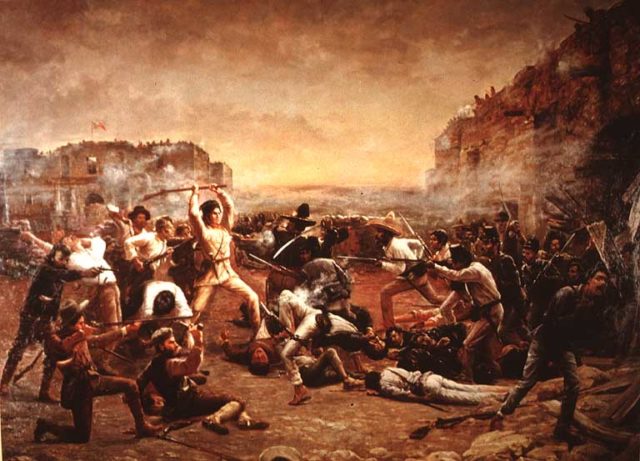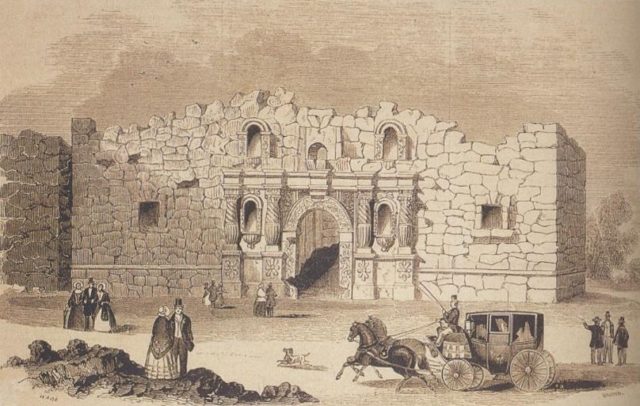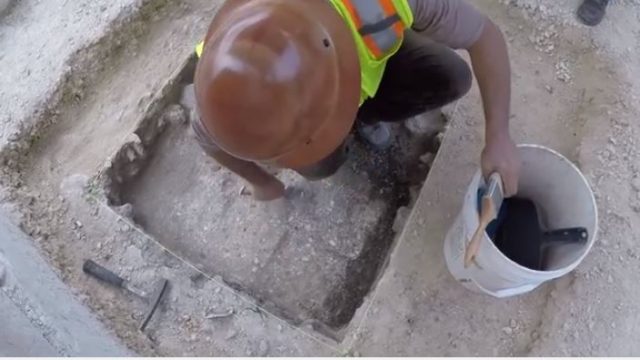Many people know about the story of the Alamo and how much of an impact it made in American history. The Alamo was – and is – the site of where a large battle took place against the Mexican soldiers and the Texan soldiers. While the men seemed to be defending their own countries/ states, the poor Alamo was left in utter ruins because of this.

Archaeologists have recently just found an extraordinary piece of rubble that could have actually belonged to the original Alamo. The experts believe they have found the main gate in San Antonio. This discovery comes nearly 300 years after the Alamo was built.
After further excavations and analysis, the archaeologists discovered that the foundation of the remains had been parts of the south wall. The analysis revealed that the wall had been built by the Spanish in the early 18th Century.
After looking at some of the maps and written documents, archaeologists read that there had been a gate into the Alamo along the south wall. The wall had later been filled in, most likely due to an attempt to block off intruders.

At Battle of the Alamo in 1836, about 182 to 257 Texans who died. The Mexican soldiers fortified the Alamo soon after the battle was over.
Although the Mexican men did not stay long, they decided to tear down many of the Alamo’s walls and set fires in some of the buildings, utterly destroying what was left of the building.
Many different archaeologists have been working on the Alamo throughout the years. These archaeologists who are excavating now are part of the Reimagine the Alamo project. They have been mainly carrying out this excavation in order to salvage and reveal some of the original, wonderful Spanish colonial building pieces.
Back in early August, the excavators told the public that they had possibly uncovered a trench that was filled with stone. These had all been held together by what is called a “caliche slurry,” or a type of mortar that was concocted out of lime and water.

The lead archaeologist on the project, Kristi Miller Nichols, works for Rabab Kistner Environment. She told one interviewer that she and her team had found those stones about three feet under the surface.
She added that they had exposed the stones, but they are not sure what to call it. They are calling it an “architectural feature” until they can analyze it further. However, she is certain that the stones are part of the Spanish colonial architecture that was originally used to build the Alamo.
She explained that as they are finding more artifacts and evidence, parts of her team are back in the office already analyzing the pieces that had already been found. The sooner they know what it was used for, the sooner they can figure out just how the Alamo used to look.
She had said that one of the most confusing part of the dig was that after looking at several different maps made when the Alamo was built, some represent the south wall and gate on different sides. If she was solely relying on maps to tell her where the gate was, she would have been out of luck and confused. However, she said that if she puts the maps down, she can clearly tell that the south wall had a gate at one point.
‘There are several different maps to look at; there are lots of different interpretations as to where to the south gate is.
This dig had lasted about four weeks. The archaeologists had hoped that they could tell a better story about the 300-year history of the building. The Alamo had once been known as the Mision San Antonio de Valero after it had been found by a Catholic mission by the Spanish. The Spanish had hoped to teach the Native Americans about the faith after they were converted to Christianity.
Around 1793, the building had been abandoned by the Spanish and was eventually turned into a military fortress.
